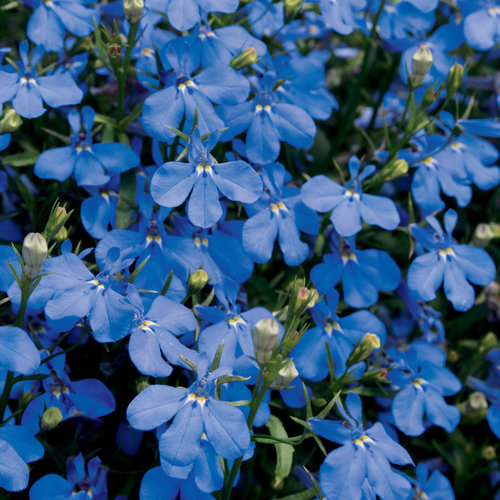This article showcases our top picks for the
Best Plants For Shade. We reached out to industry leaders and experts who have contributed the suggestions within this article (they have been credited for their contributions below).
We are keen to hear your feedback on all of our content and our comment section is a moderated space to express your thoughts and feelings related (or not) to this article
This list is in no particular order.
This product was recommended by Stella Cooper from PaydayLoansUK
They are also known as coral bells and make delicate plants for shady sites. Plant breeders have had a field day with the genus heuchera. There seems to be no end to the variations in leaf color, for example, burgundy, silvery, chartreuse, purple-black, rusty orange, and salmon. With heuchera, the foliage offers visual excitement; a few varieties also have showy flowers on slender and tall stems. However, a variety of heuchera is available, which is Chocolate Ruffles.
This product was recommended by Ashley Amor from PeopleFindFast
Hostas are mainly the foliage plants, perfect for moist soil shade gardens. They come in different sizes, from as many as 4 inches to as big as 6 feet long. But you must beware of rabbits, deer, snails, and slugs, who have a particular inclination toward the plants. You need to reconsider if there are lots of deer near where you are pondering planting them. However, these extraordinary Hostas get huge green foliage, sometimes with a gold cast depending on the light.
This product was recommended by Stacy Lewis from Eternity Modern
This flowering plant thrives in cool weather and looks amazing cascading out of window boxes. Lobelias aren’t just pretty. They’re also believed to aid in asthma, depression, and other health issues.
This product was recommended by Stacy Lewis from Eternity Modern
If you’re into a Japanese garden’s aesthetics, adding this plant to your garden certainly does the trick. This perennial plant grows in clumps and thrives in the shade.
This product was recommended by Cornelius Fichtner from PM-Exam-Simulator
Most shade plants are a little on the plain side. The Red Japanese Maple, a.k.a Acer palmatum, is a beautiful tree that looks like a flower in bloom with its red leaves. It’s evergreen, it likes heavy shade with some sunlight if possible, and it can be grown as a house plant, bush, or large tree depending on how you care for it.
This product was recommended by Richard Clews from Pants and Socks
The Foxglove is a plant that thrives in partial shade: mostly shade with some sunlight. It growns into beautiful, beautiful columns of flowers with colors like purple, violet, and even yellow. I recommend growing the Foxglove in neat rows to create a wall-like visual effect in your garden. Be warned: butterflies and hummingbirds love the plant.
This product was recommended by Michael Barr from TeleLeaf
The lovely Euphorbia, also known as spurge, is tolerant of low light levels, making it a good choice for shaded areas. It is drought-tolerant, meaning it does not require a lot of water to thrive. It is relatively maintenance-free, requiring little in the way of fertilization or pruning. Euphorbia is a fast-growing plant that will quickly fill any bare spots in the landscape. Try Euphorbia polychroma ‘Bonfire,’ which has three seasons of color, if you live in zone 5 or warmer. A variety called Jessie is a cultivar that may reach heights of 4 feet.
This product was recommended by Bobby Peel from Best Golf Accessories
It’s understandable why she is regarded as the shadow garden’s queen. Hosta is cultivated for its beautiful foliage, which comes in a broad range of hues, patterns, forms, and sizes, from teacup to truck tyre. This resilient plant thrives in areas with rich, well-amended soil and regular watering. It is consistently hardy there. Numerous types may grow in challenging conditions, such heavy shade and beside to trees. They pair beautifully with a variety of shade-loving forest plants, such as coral bells, ferns, and columbine.
This product was recommended by Bobby Peel from Best Golf Accessories
Few plants in the yard can match the strong effect of angel wings for creating an exotic ambiance (Caladium). This tropical annual became well-known as a Victorian conservatory plant and is grown for its arrow-shaped leaves, which come in a range of colours from pure white to multicoloured variegation. It’s especially useful for bringing vivid colour to your yard’s darkest corners, where such hues might be hard to come by. You may buy caladium plants or cultivate it from tubers. They will thrive best when purchased as plants for those in cooler areas or without a heat source, such as a greenhouse or heating pad, because they need a lot of heat to flourish. Grow in pots or as a bedding plant and pair with fuchsias, impatiens, and begonias.
This product was recommended by Lyle Florez from EasyPeopleSearch
These purple bell-shaped perennials thrive in flower gardens and withstand both shade and sun. Miller suggests mulching with shredded leaves to mimic what happens in nature for the happiest blooms. The shredded leaves will swiftly decompose into humus, similar to forest duff in that it feeds plants and preserves the soil. It also introduces a lot of microorganisms that are good for plant roots. Learn about the health advantages of gardening.
This post contains affiliate links. Affiliate disclosure: As an Amazon Associate, we may earn commissions from qualifying purchases from Amazon.com and other Amazon websites.
Post Views: 352











